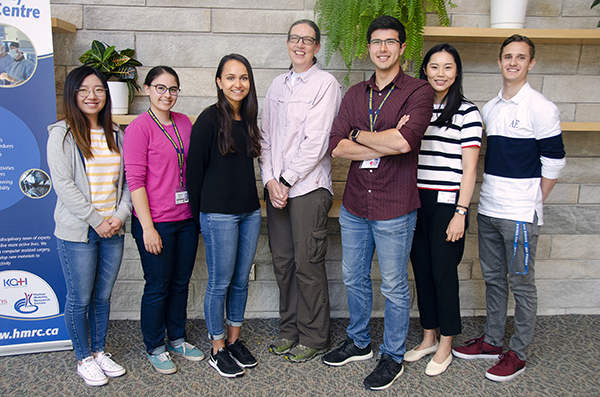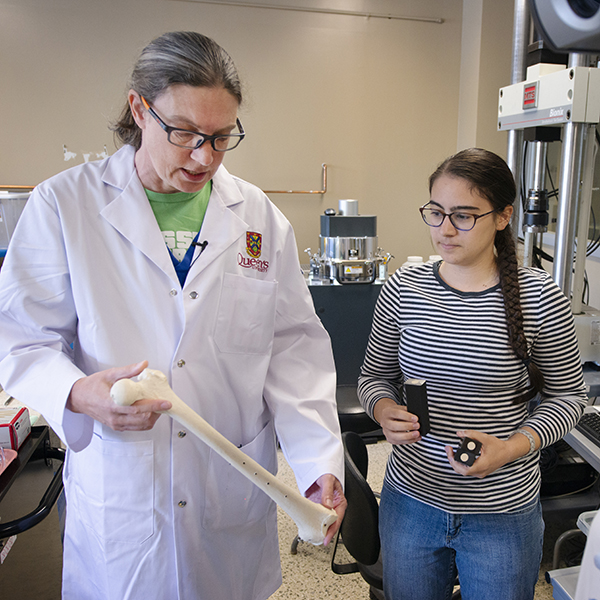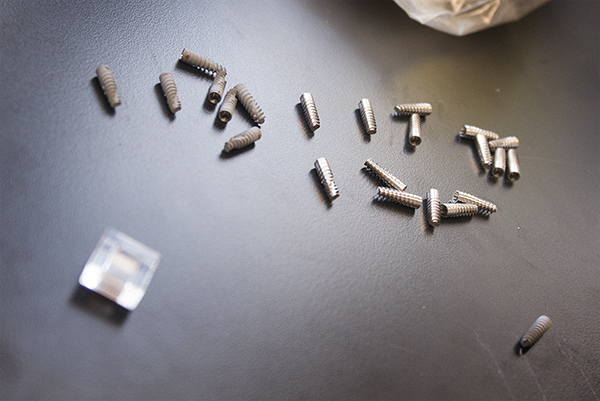Bone can become brittle and cartilage can shrink as people age, making everyday tasks painful and difficult. For many patients, joint replacement can restore mobility and reduce pain quite quickly and completely but these procedures are not without risks. Perhaps first among them is the risk of post-surgical infection at the implant site. These infections can be difficult to treat and can destroy living bone, leaving the patient worse off than they were before surgery. But what if antibiotics could be infused directly into bone cement, the grout surgeons use to connect orthopedic implants with living bone? Would that help reduce the risk of infection?
These are the questions Dr. Heidi-Lynn Ploeg, an associate professor in the Department of Mechanical and Materials Engineering here at Queen’s, is exploring with her research group, the Queen’s Bone and Joint Biomechanics Lab (QBJBL).
“The goal of my research is to understand bone health better so we can promote it in Canadian populations,” says Dr. Ploeg. “We can, for example, use what we learn about how mechanical loading affects bone strength to advise physical therapists on what type of load would contribute to increasing the health of the musculoskeletal system. That way clinicians can develop holistic treatment plans, prescribe specific exercises for bone health, and improve pharmaceutical and orthopedic treatments.”
The QBJBL found, for example, in initial tests that incorporating antibiotics into bone cement results in a notable quality deterioration of the cement’s mechanical properties, like bending fracture limits and compression fracture limits. So, they have turned their attention to developing new formulations of bone cement that can keep the risk of infection as low as possible while ensuring the cement remains strong enough to accommodate the body’s natural healing processes. It’s all work to help ensure the best possible post-operative outcomes for patients.
“Bone is an interesting structure,” says Ploeg. “It has a non-homogenous distribution of properties as well as a very anatomically interesting shape, which makes it challenging for modelling and mechanical testing.”
Among the funding sources for her work, Ploeg was recently granted an NSERC Discovery Accelerator Program supplement valued at $350,000 over five years. Ploeg is the only recipient of the supplement among the engineering faculty, one of only two recipients at Queen’s, and one of only 125 recipients across the country. The grant is intended to provide “substantial and timely additional resources to accelerate progress and maximize the impact of established, superior research programs.”
“We will be using the funds to look at loads on bone and loads on the bone/implant interface,” says Ploeg. “Thanks to the NSERC funding and also funding from Queen’s, I am actively recruiting Ph.D. students, who are motivated and interested in bone biomechanics.”
Other research projects planned or underway at the QBJBL are ways to measure the stability of tooth implants dental surgeons drive into patients’ jaws upon which to mount artificial teeth. Ploeg and her research group are working to determine how to identify and measure the best ways to do that. They’re also working with a simplified bone surrogate made from two layers of different densities to determine the sources propagation of error in bone testing and computer models.
“The bone surrogate has the same mechanical stiffness and bending as a femur,” says Ploeg. “This way we can start to quantify the propagation of error in our experimental methods and simulations.”
Finding answers to these questions and others like them depends largely on having as complete an understanding as possible of the structural properties and qualities of bone and how it interacts with the materials used in artificial implants. The QBJBL is hard at work to discover the answers to advance human knowledge of the musculoskeletal system.


